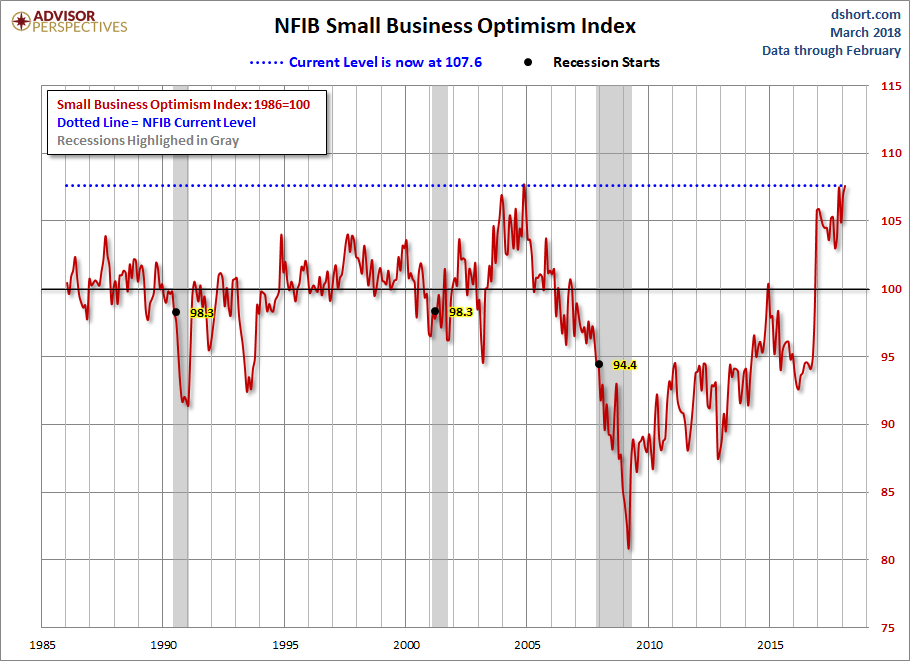Michigan Consumer Sentiment: March Final Highest Since 2004
The University of Michigan Final Consumer Sentiment for March came in at 101.7, up 1.7 from the February Final reading of 99.7. Investing.com had forecast 101.9.
Surveys of Consumers chief economist, Richard Curtin, makes the following comments:
Consumer sentiment at month's end was marginally below the mid-month reading due to uncertainty about the impact of the proposed trade tariffs. The Sentiment Index, however, still reached the highest level since 2004, and the Current Conditions Index set a new all-time peak. Importantly, all of the March gain in the Sentiment Index was among households with incomes in the bottom third (+14.1); those in the middle third were unchanged, while the Index fell among households in the top third (-5.6). Households with incomes in the top third cited significantly greater concerns with government economic policies than last month, especially trade policies, with net references falling from +31 to just +1, offsetting their positive reactions to tax policies. The consensus expectation among consumers is that interest rates will increase in the foreseeable future. While consumers view the current level of interest rates as still relatively low, they understand that interest rate hikes are intended to dampen the future pace of economic growth. Their reaction will both emphasize borrowing-in-advance of those expected increases as well as heighten their precautionary savings motives. The trade-off between spending and saving will crucially depend on the pace of future interest rate hikes compared with the pace of income growth. It is likely that income growth will initially dominate, tilting consumers' motives more toward spending than saving. Overall, the data are consistent with a growth rate of 2.6% in consumption from mid-2018 to mid-2019. [More...]
See the chart below for a long-term perspective on this widely watched indicator. Recessions and real GDP are included to help us evaluate the correlation between the Michigan Consumer Sentiment Index and the broader economy.
(Click on image to enlarge)

To put today's report into the larger historical context since its beginning in 1978, consumer sentiment is 18.1 percent above the average reading (arithmetic mean) and 19.5 percent above the geometric mean. The current index level is at the 91st percentile of the 483 monthly data points in this series.
Note that this indicator is somewhat volatile, with a 3.0 point absolute average monthly change. The latest data point saw a 1.7 percent change from the previous month. For a visual sense of the volatility, here is a chart with the monthly data and a three-month moving average.
(Click on image to enlarge)

For the sake of comparison, here is a chart of the Conference Board's Consumer Confidence Index (monthly update here). The Conference Board Index is the more volatile of the two, but the broad pattern and general trends have been remarkably similar to the Michigan Index.
(Click on image to enlarge)

And finally, the prevailing mood of the Michigan survey is also similar to the mood of small business owners, as captured by the NFIB Business Optimism Index (monthly update here).
(Click on image to enlarge)

The general trend in the Michigan Sentiment Index since the Financial Crisis lows was one of slow improvement. The survey findings saw a jump in late 2016 with improvements that have continued through present.
Disclosure: None.



